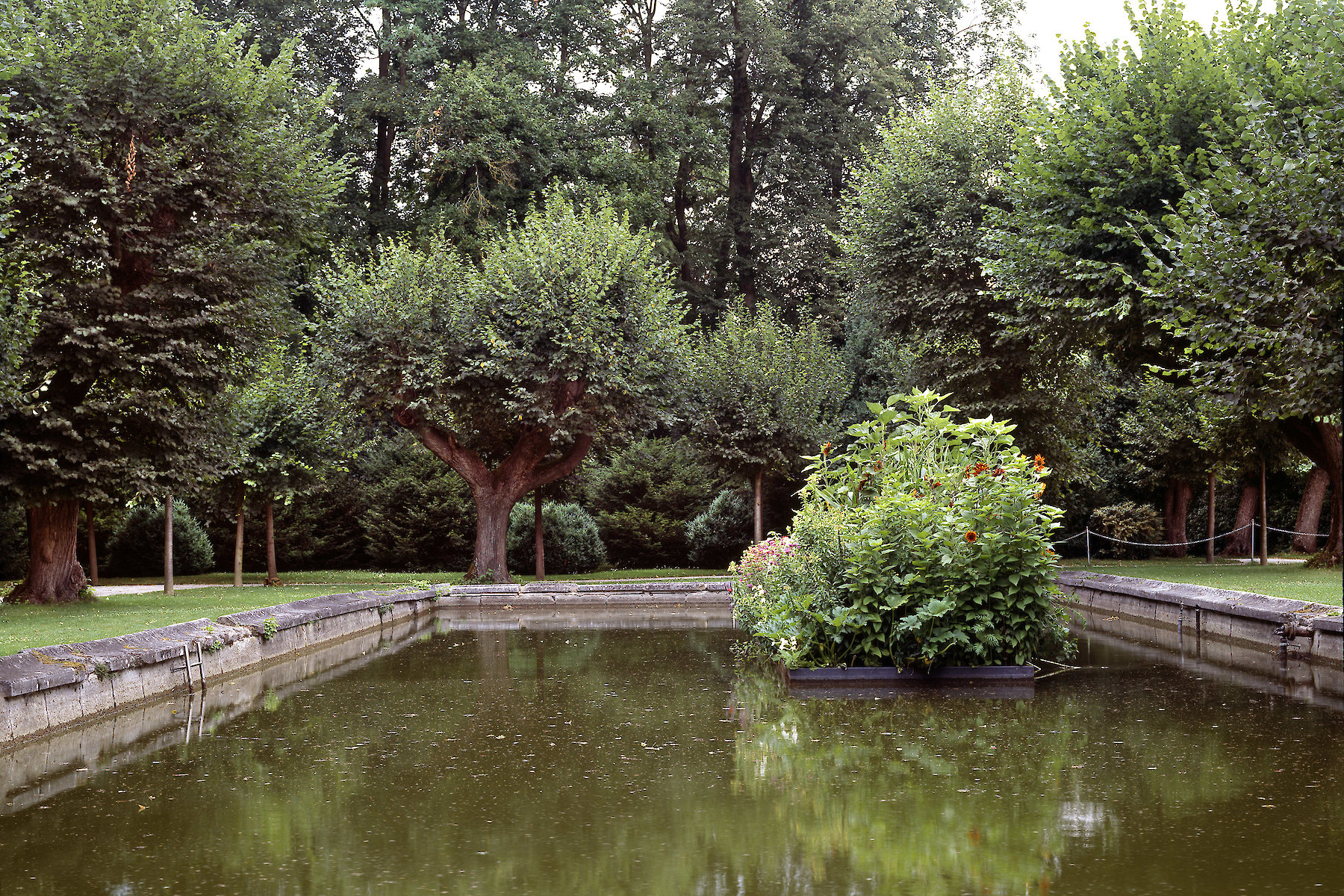Sculpture in a water basin, Melk Monastery Park
2006
New construction
In 2006, Christian Philipp Müller installed a living sculpture in the Baroque water basin on the uppermost level of the Melk Monastery’s gardens. A simple metal tub on a concrete plinth, its measurements and position calculated according to the ideal proportions of the golden section, Müller unfolded the aesthetics of Minimal Art in all its formal scope, presenting a vegetable bed as a changing processual sculpture.
Subject of the arrangement, which reminds us of a Dutch still life, are the plants European seafarers and, later, botanists brought back from their voyages of discovery and scientific expeditions: potatoes and melons, Indian corn and string beans, pumpkins, sunroot and amarant, as well as numerous tomato varieties. In its unpretentious beauty, Müller’s work obeys the cycle of nature, changes with the seasons, and opens up the historico-cultural geographical realm between past and present, Europe and America.
Müller offers a wealth of references: monastery gardens as places providing people with food and medicinal herbs, the intellectual system of the Benedictine monks and their Baroque gesamtkunstwerk, Orientalism, and the yearning for faraway countries as articulated by Johann Wenzel Bergl in the garden pavilion in 1764, where a rampant flora merges all foreign things in a fantastic spatial illusion. […]
After The New World had been commissioned by Kunst im öffentlichen Raum Niederösterreich for the monastery at Melk, the evn collection has seen to the necessary annual planting and organized the thanksgiving event with the artist since 2007.
Jabornegg & Pálffy are responsible for the architectural implementation.
Text: Brigitte Huck
LIT: evn collection 2006-2011, Verlag der Buchhandlung Walther König, Köln 2011. p. 137-140.




















